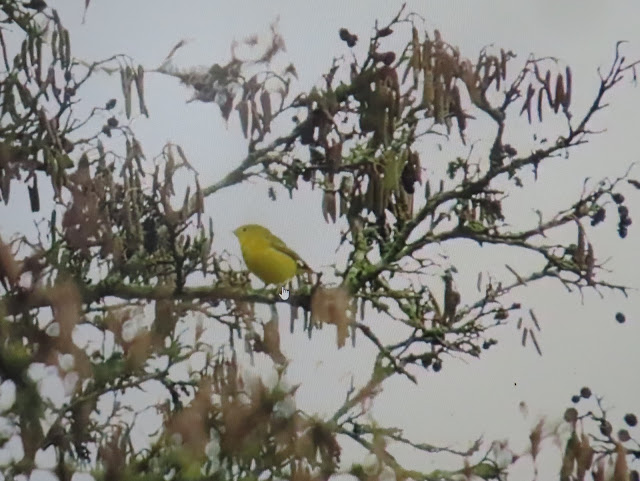HERE'S hoping that the Yellow Warbler that has turned up in Kent over the festive holiday does not suffer the same fate as the first British record of the same species.
After it was trapped late on the day it was found - on Bardsey Island off the Welsh coast on August 29, 1964 - a decision was made that it should be kept in confinement overnight pending confirmation of its identity.
At first, it was thought that the bird might have been a variant willow warbler, and perusal of the only available reference, L. A. Hausman's Field Book of Eastern Birds (1946), was not helpful.
Alas, while being scrutinised the next morning, it died in the hand.
Although a subsequent write-up in the November 1965 edition of British Birds journal showed not even a hint of remorse or contrition from observatory staff, there is surely more than even chance that it was human contact which tipped an already fragile bird over the edge.
The British Birds report, which was written by the Bardsey warden, George Evans is certainly thorough, not least because he had obtained a detailed post mortem from Dr P. M Driver which provided valuable information about the bird's condition.
Dr Driver wrote: "This bird had no observable signs of disease or parasitic infection, and seemed generally to be in good condition.
"There was, however, no sign of the usual fat deposits found in fall migrants which suggests that it had recently exhausted its food stores.
"There was no obvious sign of muscle wastage.
"There was no sign of any food remains in the gut, though this is to be expected in a small passerine after a night's rest from feeding."
As with all passerine vagrants to British shores, the possibility of ship-assistance can never be discounted.
In the rest of his British Birds report, George Evans wrote: "If the bird's first point of landfall was Bardsey, its weight on arrival would tend to suggest that perhaps it did not cross without some form of assistance and that it succeeded in obtaining meagre sustenance en route.
"It is very doubtful if it was on the island before the day on which it was first seen and caught.
"Furthermore, an examination of the Daily Weather Report covering the week prior to August 29 does not show weather situations likely to permit a bird of this size optimum conditions for drifting non-stop from America."
Since 1965, there are believed to have been nine other British records, but this week's bird - discovered by Glenn Honey close to a stream at the south end of Ham Hill sewage treatment works in New Hythe, Kent, on Christmas Eve - is only the second for England (the other having been at Culverwell on the Isle of Portland in Dorset in August 2017).
Between Tuesday and Thursday, it was both showing well and calling frequently to the delight of hundreds of twitchers, many of whom had, at their own risk, forsaken festive holiday family responsibilities for a chance to see such a rare and beautiful jewel hopping about in the bare branches of alder trees.
How come a migratory bird whose range in the Americas stretches from Alaska to Peru finds itself in Kent? Doubtless a question that will prompt plentiful speculation in the days and weeks to come.
 |
| Twitchers celebrated the discovery with super-birder and author Gary Bagnell among those who contributed to the X platform |
 |
| Plate depicting Yellow Warblers (top two birds) in Warblers of North America (1917) by Frank Chapman |

No comments:
Post a Comment